100th Anniversary Great Nave Tour at the Cathedral of St. John the Divine
Celebrate the 1925 construction of the stunning nave inside the world's largest Gothic cathedral!


New York City wouldn’t be the same without the scores of statues that decorate its many parks, plazas and other public spaces. From Christopher Columbus at Columbus Circle to Atlas supporting the world on his shoulders at Rockefeller Center, New York City sculptures range in subject, size and style, from historic stone and bronze to brightly-colored modern and even post-modern sculptures. But every now and then, a statue stops you in your tracks as you wonder, what is that doing here? We’ve rounded up the quirkiest and most surprising statues in New York City, from a former communist leader to a giant bronze rat.
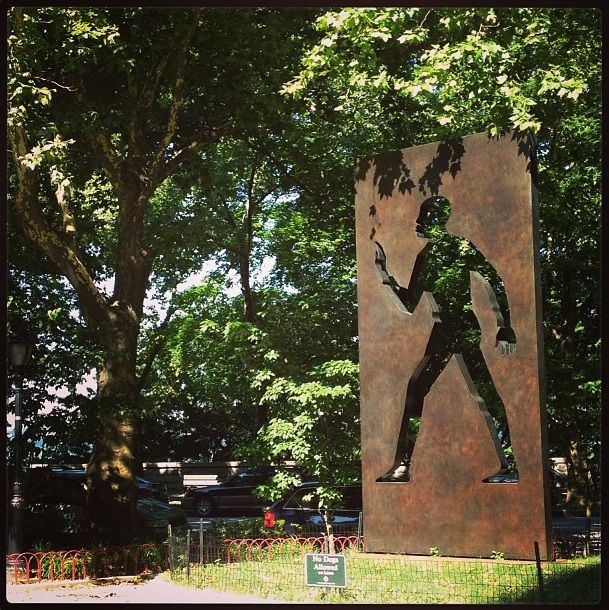
Photo credit: Kelli Trapnell
The design of this sculpture certainly exemplifies Ralph Ellison’s book Invisible Man, since there is no man but only a silhouette. The sculpture was created in 2002 by Elizabeth Catlett and placed in Riverside Park. Ralph Ellison lived at 730 Riverside Drive, near the park, and wrote about the struggles of being a young African American man in New York City who felt ignored by society despite his talent and promise. When the book first came out in 1952, it remained on the bestseller list for sixteen weeks and remains a classic of American literature to this day. Perhaps if Ralph Ellison had seen this statue, he wouldn’t feel so invisible anymore.

The American Merchant Mariners’ Memorial was conceived in 1976 to commemorate the victims of a Nazi U-boat attack on a merchant vessel. While the sailors clung to their sinking ship, the Nazis heartlessly photographed them. Sculptor Marisol Escobar based the sculpture’s design on the photo and cast it in bronze. As the tide rises, the drowning figure is submerged in water as a reminder of the thousands of marine merchants who lost their lives in global conflicts.
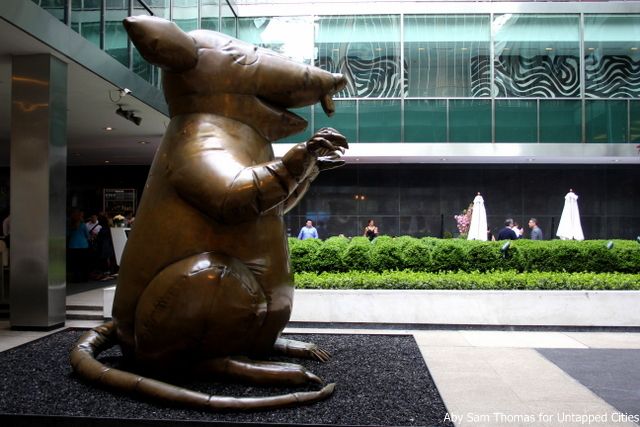
The large, inflatable gray rats are well known symbols of union workers’ protest against exploitation, and pop up every now and then in New York City. But we think it’s quite surprising that a huge bronze version of the union rat is located in front of the Lever House on Park Avenue, in one of Manhattan’s most affluent areas. The sculpture is called “The New Colossus” and is part of the Bruce High Quality Foundation’s Art History with Labor project. This is the only sculpture on our list that isn’t a permanent fixture, so go check it out before it disappears on September 28!
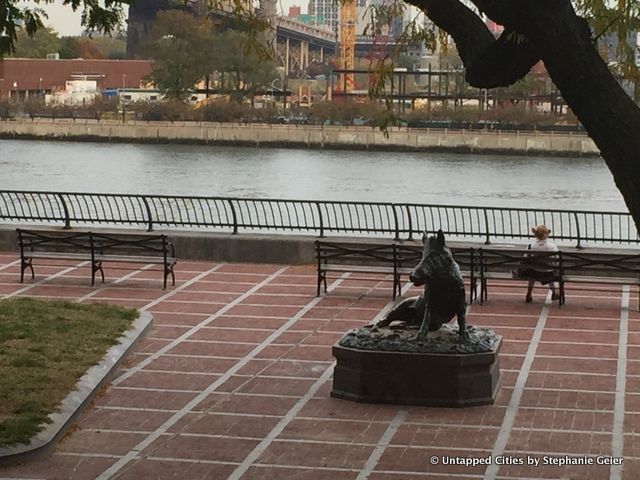
Wild boars are rare creatures in Manhattan–almost as rare as replicas of 17th century Italian sculptures–and Porcellino is both. The original piglet by Renaissance sculptor Pietro Tacca decorates a fountain in Florence. It was a copy of a Greek marble sculpture found in Rome in the 16th century. This porcellino was donated by a neighborhood philanthropist and lords over Sutton Park Place on East 57th Street.
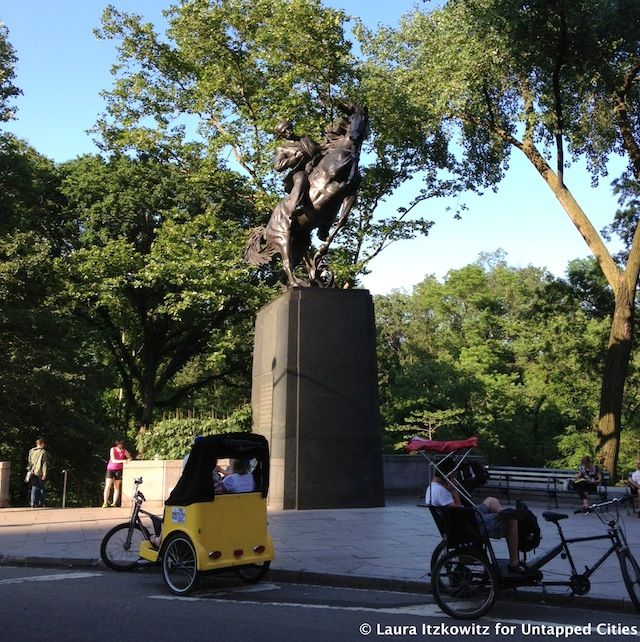
José Julián Martí Pérez (1853-1895) was influential in the Cuban War of Independence against Spain and is considered a Cuban national hero. He was a poet, a journalist, an essayist, a revolutionary philosopher, a translator, a publisher, a professor and a political theorist. The sculpture by Anna Vaughn Hyatt Huntington was presented as a gift to the Cuban government for presentation to New Yorkers, but despite being completed in 1959, it wasn’t unveiled until 1965 due to the controversy about Fidel Castro’s regime.
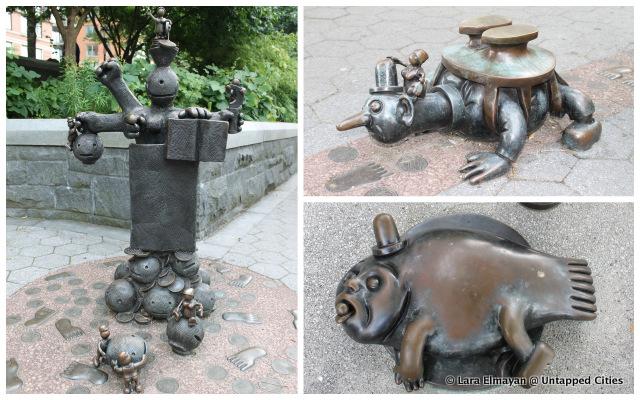
Tom Otterness is known for his cartoonish figures that are both playful and political. He riffs on capitalism, featuring bankers with money bags for heads, workers holding hammers and other quirky characters. You might have seen his surprising little sculptures in the 14th Street subway station, where they are poised on steel beams and benches. This collection of sculptures, called The Real World, in Nelson Rockefeller Park in Battery Park City was installed in 1992 and remains popular with kids.
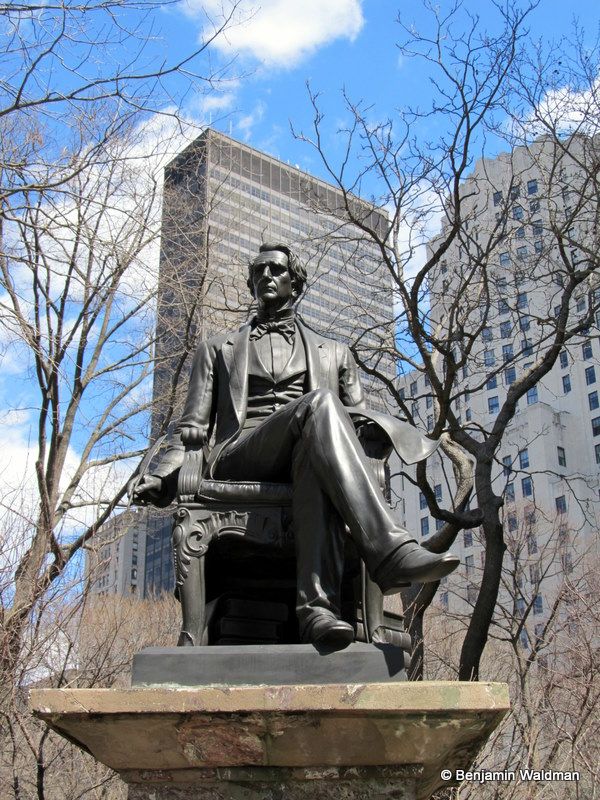
Urban legend says that sculptor Randolph Rogers put Seward’s head onto an extra copy of Lincoln’s body, which he had lying around. William H. Seward served as Lincoln’s Secretary of State, and oversaw the purchase of Alaska. For over a hundred years, there were rumors that the statue’s construction committee had failed to raise the $25,000 necessary to build the statue, so they asked Rogers to do his best with what they had. The result seemed to resemble Lincoln’s body more than Seward’s, which reinforced the story. Unfortunately, based on evidence gathered by Untapped history editor Benjamin Waldman, the rumor seems to be untrue.
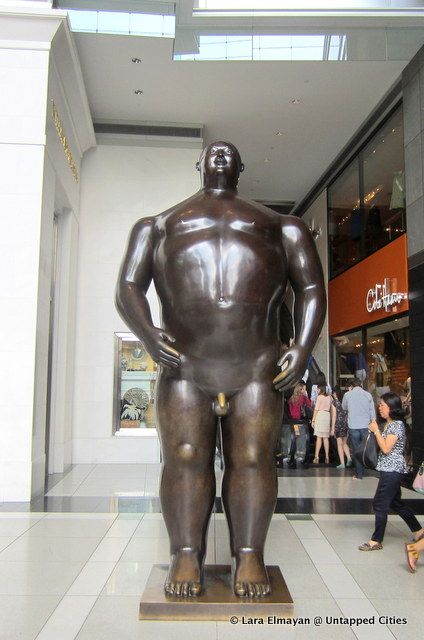
Many visitors to the Time Warner Center in Columbus Circle simply can’t resist the urge to touch this statue’s small member. So many, in fact, that it has been worn to a golden shine. Adam is the work of Colombian artist Fernando Botero, who is famous for his rotund figures in both sculpture and paintings. Adam’s companion, Eve, stands on the other side of William Sonoma, but she doesn’t get nearly as much attention as Adam.

When 150,000 people and nearly 90% of Hiroshima’s architecture were wiped out by the atomic bomb, this statue of Shinran Shonin miraculously survived. Shinran was the founder of the Jodo Shinshu sect of Buddhism in the 13th century. In 1955, the statue was brought to the United States and offered to the U.N. as a symbol of peace. When the U.N. declined due to a lack of space, Shinran was placed in front of the New York Buddhist Church at 105th Street and Riverside Drive. It remains there as a symbol of faith in the face of tragedy.
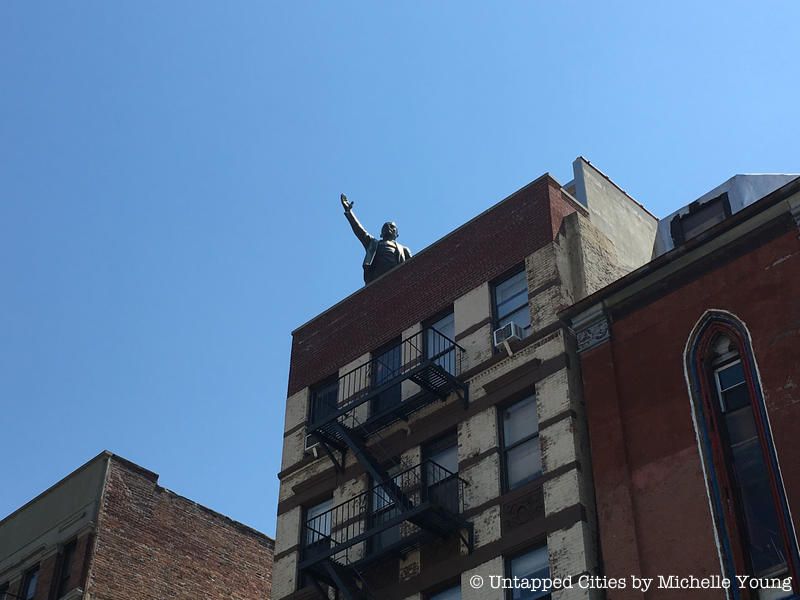
Our favorite sculpture in Manhattan has to be this bronze replica of Communist leader Vladimir Lenin atop a building in the East Village. What could it possibly be doing there? It turns out the statue was originally a Soviet-commissioned work, but when the Soviet Union collapsed, it was never unveiled. Developer Michael Rosen, a former professor of radical sociology at NYU, wanted a sculpture of Lenin for Red Square, his luxury apartment building on East Houston Street between Avenues A and B. A team of art dealers found the sculpture in a dacha in Moscow and brought it back for Rosen. However, in 2016 the sculpture was taken down when Red Square was sold and re-erected in June 2017 atop 178 Norfolk Street.
Also check out our article on Grounds for Sculpture in New Jersey, where Impressionist paintings were replicated as life-size sculptures. Get in touch with the author @lauraitzkowitz.
Subscribe to our newsletter